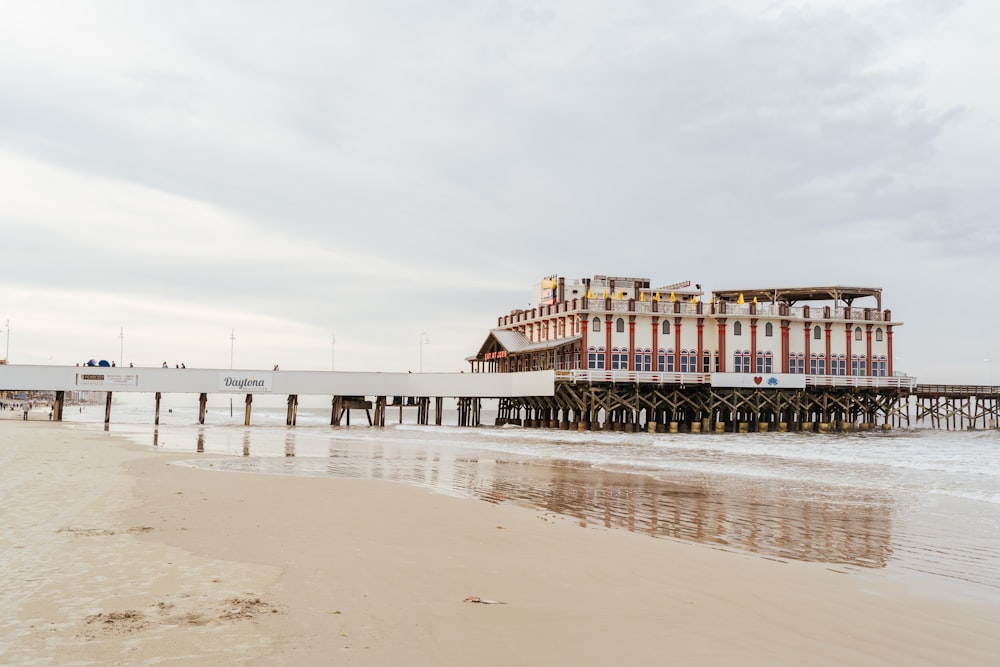Florida is renowned for its sun-kissed shores and vibrant atmosphere, the arrival of a hurricane can have profound implications for Daytona Beach and its residents.
Join us as we embark on a journey through time to uncover the details of this momentous event and explore its lasting effects on one of Florida’s most beloved coastal destinations.
Are you ready to uncover the truth? Let’s dive in and find out when Hurricane Nicole made landfall in Daytona Beach!
Key Takeaways
-
- The exact moment Hurricane Nicole hit Daytona Beach, Florida, is critical for residents, researchers, and weather enthusiasts to understand the impact of this natural disaster accurately.
-
- Knowing historical weather patterns in Daytona Beach helps in preparing for future hurricanes and severe storms effectively.
-
- Hurricane Nicole caused significant damage in Daytona Beach, including flooding, power outages, and stretched emergency services, emphasizing the importance of preparedness and resilience.
-
- Media coverage and public response to Hurricane Nicole underscore the significance of staying informed, following evacuation orders and being prepared for disasters.
-
- Accessing authoritative sources like the National Hurricane Cjoin and the Hurricane Research Division provides useful information on past hurricanes, weather patterns, and disaster preparedness strategies.
Overview of Hurricane Nicole
Hurricane Nicole, a powerful tropical cyclone, made its mark on history with its impact on various regions, including Daytona Beach, Florida.
Emerging as the 14th named storm of the 2016 Atlantic hurricane season, Nicole gained strength as it traversed the warm waters of the Atlantic Ocean.
The hurricane intensified rapidly, reaching Category 4 status on the Saffir-Simpson Hurricane Wind Scale, with maximum sustained winds of up to 130 mph (215 km/h).
Nicole’s path was somewhat erratic, posing challenges for forecasters and coastal communities alike.
On October 7, 2016, Hurricane Nicole made landfall in Bermuda, unleashing strong winds, torrential rainfall, and dangerous storm surges.
The island nation experienced widespread power outages, significant damage to infrastructure, and disruptions to daily life.
Historical Weather Patterns in Daytona Beach
Daytona Beach, nestled along Florida’s east coast, boasts a rich history intertwined with diverse weather patterns that have shaped its landscape and culture over the years.
From balmy summers to mild winters, Daytona Beach experiences a subtropical climate characterized by distinct seasonal variations.
Summers in Daytona Beach are typically hot and humid, with average daytime temperatures hovering around the high 80s to low 90s Fahrenheit (around 30-35 degrees Celsius).
Afternoon thunderstorms are common during the summer months, providing brief relief from the heat.
Fall brings a slight drop in temperatures, with warm days and cooler nights. September and October still see occasional rainfall and tropical activity, as the Atlantic hurricane season peaks.
Winter in Daytona Beach is mild compared to many parts of the country, with daytime temperatures ranging from the upper 60s to low 70s Fahrenheit (around 20 degrees Celsius).
While snow is virtually unheard of, occasional cold fronts can bring cooler temperatures and brisk winds to the region.
Spring marks the transition to warmer weather, with pleasant temperatures and blooming foliage.
Daytona Beach sees an increase in tourism during the spring months, as visitors flock to the area to enjoy the mild weather and outdoor activities.
Historically, Daytona Beach has been vulnerable to tropical storms and hurricanes, especially during the Atlantic hurricane season, which runs from June 1st to November 30th.
While direct hits from hurricanes are relatively rare, the threat of high winds, heavy rain, and storm surges looms large during the peak of hurricane season.
Impact of Hurricane Nicole
Hurricane Nicole, a powerful Category 4 hurricane, made landfall in Bermuda on October 13, 2016, but its effects were felt beyond the island’s shores.
While Daytona Beach, Florida, was not directly hit by the eye of the storm, it experienced significant impacts from Nicole’s outer bands.
The primary impact of Hurricane Nicole on Daytona Beach was heavy rainfall, leading to localized flooding in low-lying areas and along coastal regions.
The torrential downpours overwhelmed drainage systems and resulted in road closures, property damage, and transportation disruptions.
In addition to rainfall, Daytona Beach experienced strong winds associated with the storm.
These gusty winds toppled trees, damaged structures, and downed power lines, leaving thousands of residents without electricity.
Beach closures and warnings were issued due to rough surf and dangerous rip currents, posing hazards along the coastline and causing erosion.
The indirect impact of Hurricane Nicole on Daytona Beach highlighted the region’s vulnerability to tropical weather systems and emphasized the importance of preparedness and resilience.
The storm prompted residents and officials to review emergency plans, reinforce infrastructure, and take proactive measures to mitigate future risks.
Beyond the immediate impacts on infrastructure and public safety, Hurricane Nicole also had broader economic and social consequences.
The disruption caused by the storm affected businesses, tourism, and daily life in Daytona Beach, underscoring the interconnectedness of weather events and community resilience.
Media Coverage and Public Response
Looking at the media coverage and public response to Hurricane Nicole hitting Daytona Beach, Florida provides useful ideas into how communities cope with natural disasters.
The frenzy stirred by non-stop news broadcasts and social media updates created a sense of urgency and prompted immediate action.
1. Media Coverage:
News outlets like The Weather Channel and local TV stations key part in disseminating real-time information about the hurricane’s path, intensity, and potential impact on Daytona Beach.
Their continuous coverage kept residents informed and educated on evacuation orders, emergency shelter locations, and safety measures.
2. Public Response:
In response to the looming threat of Hurricane Nicole, the city of Daytona Beach activated its emergency response protocols.
Public announcements through radio broadcasts and official social media channels urged residents to stay indoors, secure their properties, and prepare emergency kits.
The unified efforts of local authorities and community members reflected a strong commitment to disaster preparedness and resilience.
